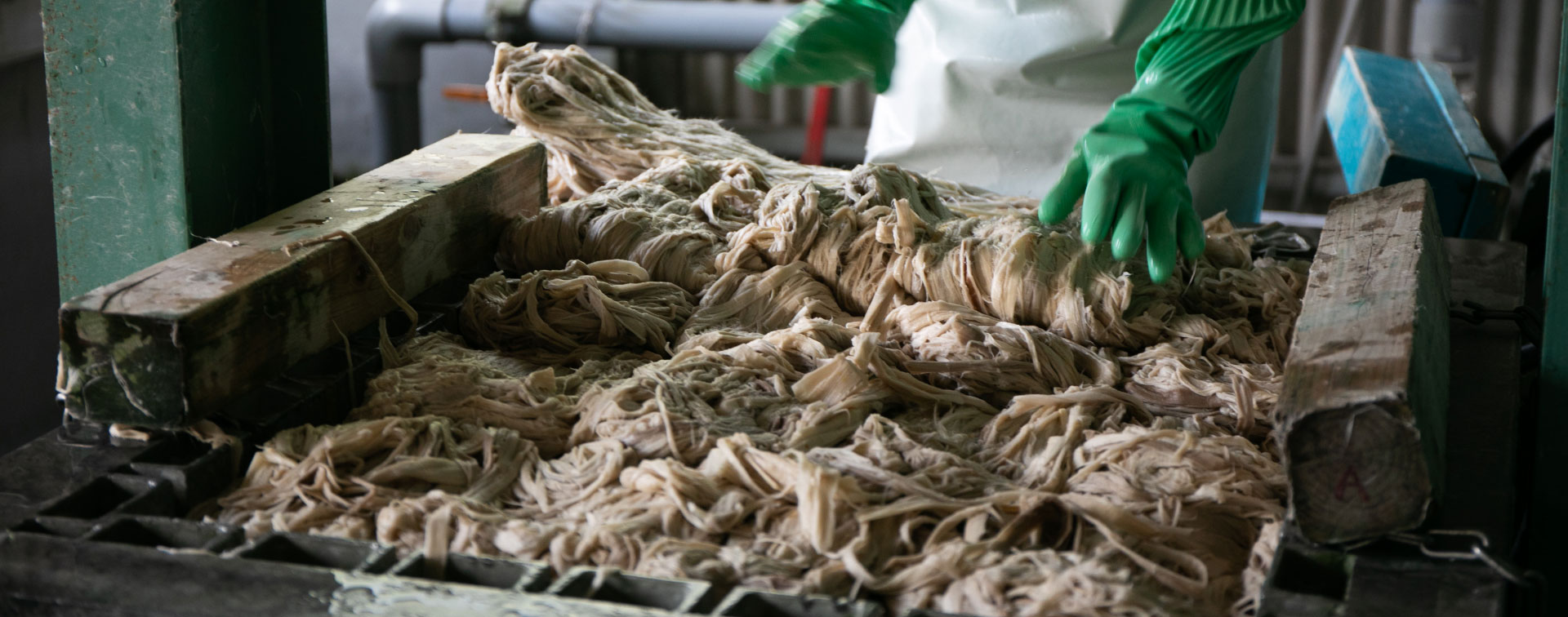
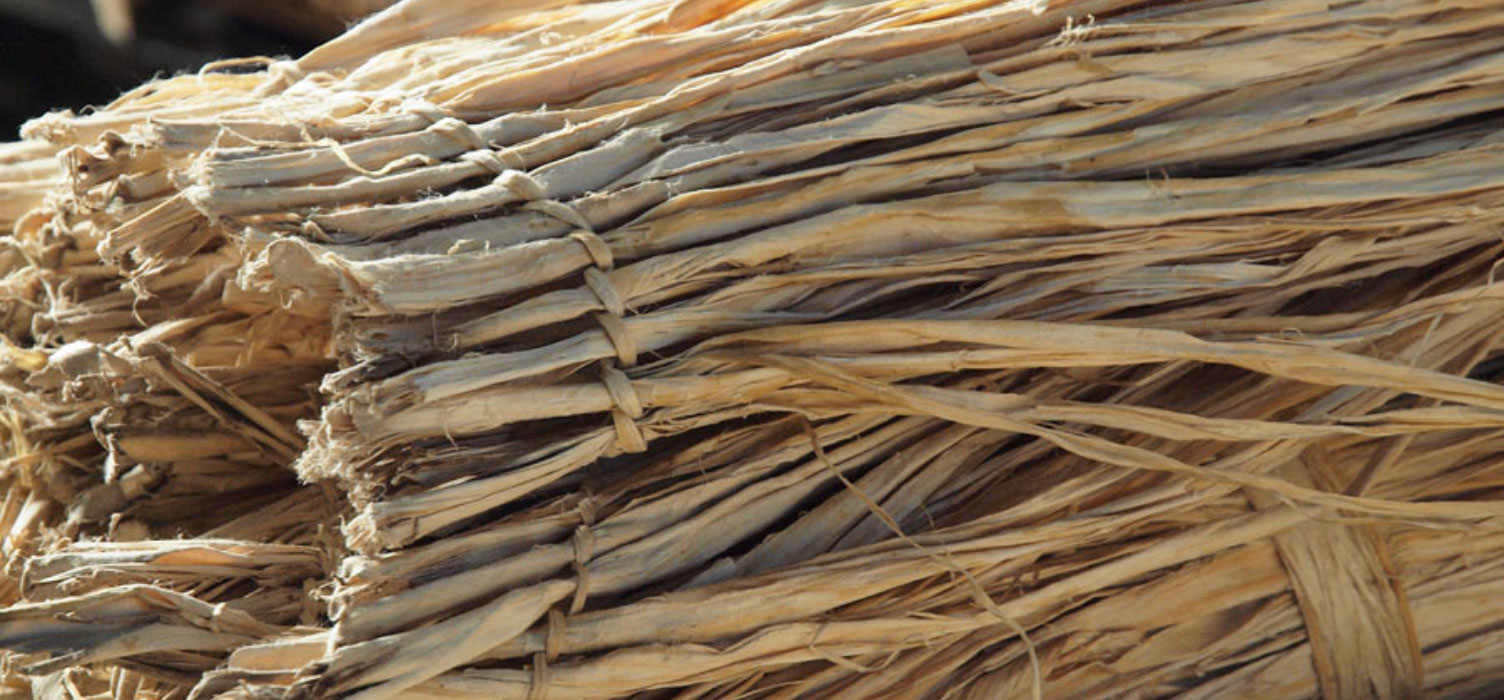
The living element of our washi is kozo,the Japanese paper mulberry tree. The entire washi-making process depends on how well the kozo is produced. Kozo from Japan, Paraguay, China, and Thailand are handled by our company. Each variety of kozo has its own unique characteristics, and we change the variety of kozo we are using in order to meet the specific wishes of the customer. Our company has been using kozo since the era of handmade paper, and our intention is to adapt to the needs dictated by the times we live in. Thus, we have been making paper that takes full advantage of the special qualities of each different variety of kozo.
1
Cooking of the plant material

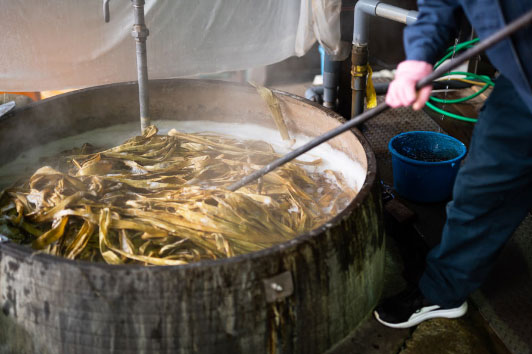
The quality of kozo plant material depends on the natural conditions under which it was produced. In terms of quality of the washi that is created from this material, however, a clear difference emerges depending on the technology used in the washi-making process. The age of the kozo tree, the season in which it is processed, the chemicals used when cooking the material, the time it takes to process the material, and the uniformity of the raw material are all factors that make a difference in the final product. As a result of cooking, the pectin and lignin that connect the fibers of the plant are removed, and we come closer to the point where only fibers remain in the paper-making material. It is at this point that we alter the processing methods according to the wishes of the customer. These wishes are often cost-related, and result in certain operations that can only be done by hand.
2
Washing with water / removing impurities
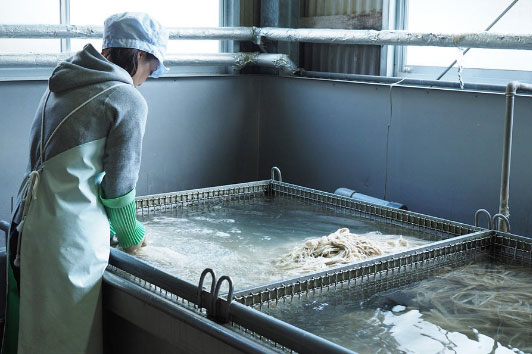
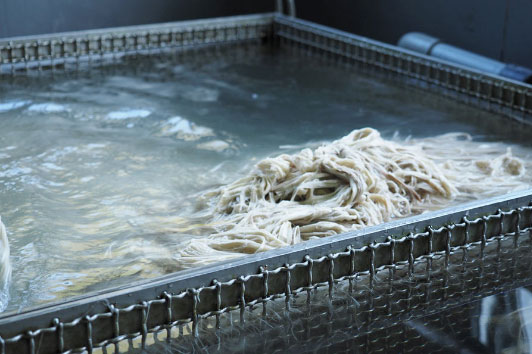
After cooking the material, the "maturing" phase of the material is finished, and is followed by washing of the material and removing of impurities―Due to an original method invented at our company, we have created a system in which the material is constantly being rinsed in running water. It compares with ancient times when our ancestors washed kozo in a nearby river. During this phase we remove scratches and cuts caused by the plants rubbing against one another. This is a very important part of the process because the scratches do not whiten even when bleached, and will appear on paper. After several days of this phase we begin removing impurities in the material. There are five separate stations requiring five different workers in the removal of impurities. It is from this process that the best paper in the world is born.
3
Disentanglement
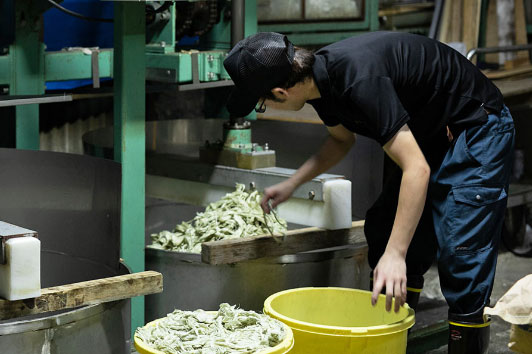
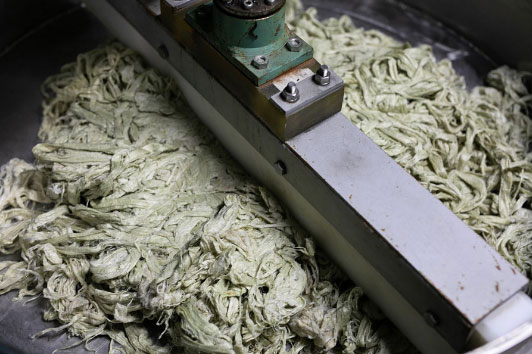
After the impurity removal phase has finished, the disentanglement of the material begins. This process is time-consuming, as the fibers of kozo must be uniformly disentangled. The amount of time required for this process depends on the quality of the kozo material, the amount of time that the material was cooked and matured, and the season in which the process is being undertaken. In recent years, we have done our best to find numerical values for the decisions that a papermaker traditionally made based on their instinct and skill. However, we have found that the disentangling of kozo fibers is one area in which we could not rely simply on data. This meticulous process of disentanglement of the fibers results in every single fiber being separated in preparation to become reborn as washi.
4
Bleaching(if necessary)
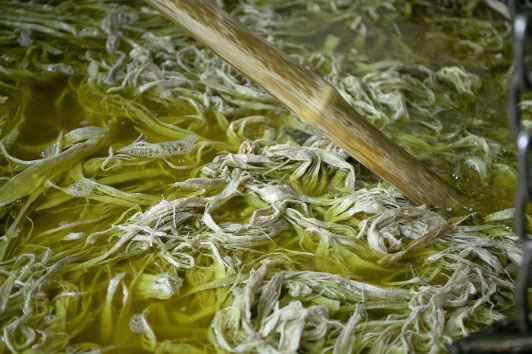
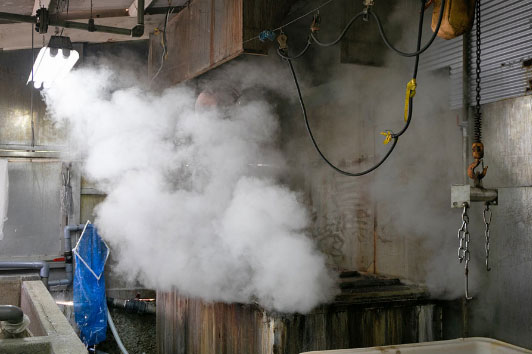
After washing and removing of impurities, the color of the material is reddish-brown. Depending on the reason for which the washi will be used, there are occasions in which the paper is made without bleaching. However, as there are differences in color due to the nature of the material, the fibers are usually bleached in order to achieve a uniform product. There are various bleaching methods, the most common being bleaching with sun, bleaching with chlorine, and bleaching with chemicals other than chlorine. Most machine-made kozo washi companies bleach their material with chlorine. However, it is often the case that chlorine remains in chlorine-bleached paper, and the paper eventually takes on a yellowish tinge over time, or even disintegrates. In order to prevent this, our company has developed a new method to bleach without chlorine, and we have received authorization from Kochi Prefecture and Shikoku Bureau of Economy, Trade and Industry for our new processing methods.
5
Mixing the fibers

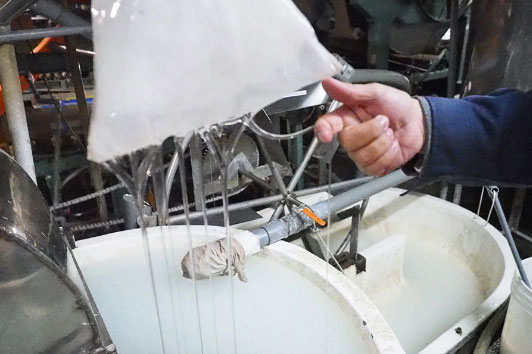
This is an operation in which the fibers are evenly distributed in water solution. Even for material from which the impurities have been removed and fibers have been disentangled, the ratio of plant fiber weight to water weight is 1.5. This means that the material will soon sink if mixed only in water solution. This is where “neri" comes in. Neri is an agent to increase the thickness of the material solution, although it does not have glue-like adhesive properties. The amount of thickening agent is adjusted depending on the temperature, the final product, and other chemical compounds in the solution. First the material is mixed in water, and the water and fiber acclimate to one other. Then, neri is mixed in the solution (the amount of which is adjusted according to the kind of paper being made),and the entire solution flows into the papermaking machine.
6
Paper Making machine
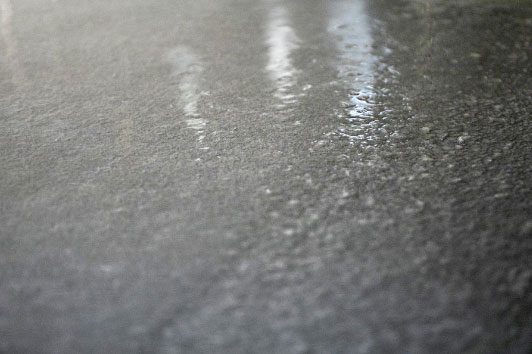
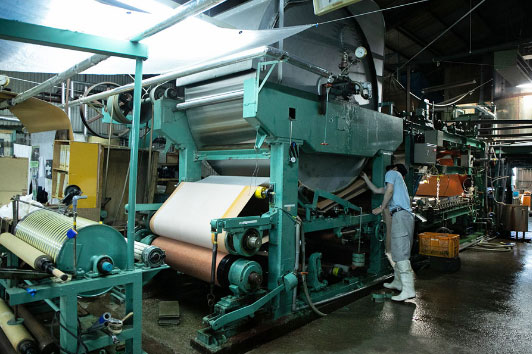
The material (which until this point has followed a particular processing method depending on the intended final product) now flows into the papermaking machine. Our company uses two papermaking machines, which are both of a class of machines referred to in Japanese as “Kesui-shiki tanmo shoshiki". Although both of our machines are of the same make and design, each has its own uniqueness, and the final product from each of these machines is different, even when using the same material. Although we choose which machine to use depending on the desired end result, both of these machines perform the same operation that was performed by hand back in the days of handmade paper: the rocking or back-and-forth movement of a net that results in plant fibers becoming evenly entwined. During this operation, we are engaged in carefully observing and adjusting the size and length of miniature waves created in the fiber solution.
7
Becoming a roll of paper
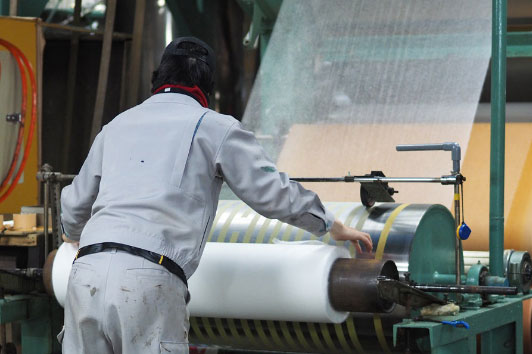
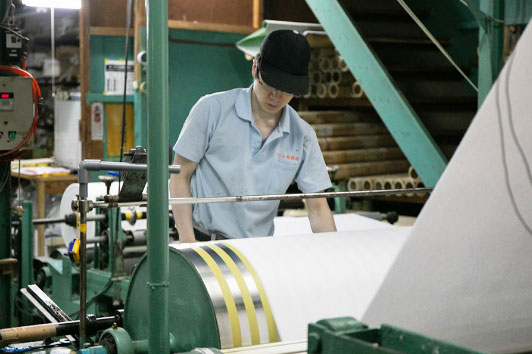
What were once very thin fibers have at this stage become rolled into sheets of paper, on the way to becoming our finished product. Depending on the end use of the final product we use a variety of different materials, but the majority of it is kozo (Japanese paper mulberry). The fibers of kozo are made up of cellulose, which consist of long chains of glucose molecules. Cellulose is highly water soluble, and when the fibers are set in water they absorb the water and expand. Once this water is dried, the part that was previously combined with the water then combines with the fibers, a process called hydrogen combination. The fibers of kozo are extremely slender and delicate, and are dried over long period of time at low temperature.
8
Finishing
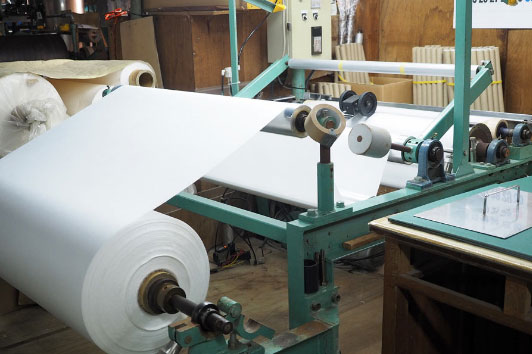
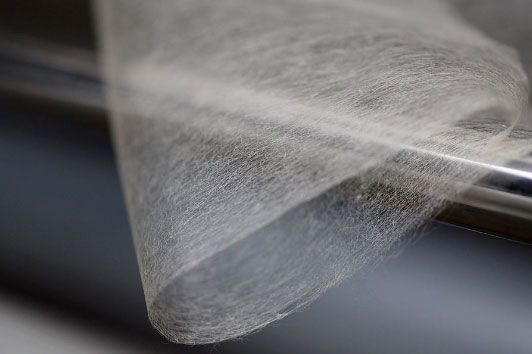
The finishing of kozo washi is also a very painstaking process. Our Japanese Paper TENGU, the world's thinnest kozo washi at 2.0 grams per square meter, has such a delicate transparent nature that if we are not careful in this finishing process, wrinkles will appear in the paper. According to our customers' needs, we carefully finish a paper that will be easy to use. In this way, our paper is delivered from the mountains of Tosa to our customers who lovingly use washi all over the world.